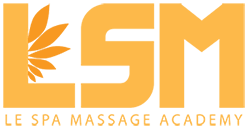- Philosophy and Approach:
- Eastern: Rooted in traditional healing systems like TCM and Ayurveda, focusing on restoring balance and promoting well-being through energy flow and pressure points. It views the body as an interconnected system of energy channels or meridians.
- Western: Emphasizes addressing specific muscular issues and promoting relaxation through techniques like kneading, friction, and effleurage. It approaches the body from a biomechanical perspective, focusing on the manipulation of soft tissues.
- Pressure and Intensity:
- Eastern: Involves deeper pressure and stretching movements to release tension and improve energy flow. Techniques such as acupressure in Shiatsu aim to restore balance in the body’s energy flow.
- Western: Varies in pressure intensity based on client preferences and the therapist’s training. It ranges from gentle strokes to firmer kneading for muscle release, with the goal of promoting relaxation and reducing muscle tension.
- Body Positioning and Movement:
- Eastern: Involves passive stretching and rhythmic movements, with the client lying on a mat on the floor. This allows for greater flexibility and range of motion as the therapist uses their hands, elbows, and feet to apply pressure and guide the client through various stretches.
- Western: Typically involves the client lying on a massage table, allowing easier access to target specific muscle groups with techniques like gliding strokes and kneading. The therapist may also employ positioning aids such as pillows or bolsters for comfort and support.
- Focus on Energy Channels vs. Muscular Anatomy:
- Eastern: Targets energy pathways and acupoints along meridians to stimulate energy flow and promote healing. Techniques such as Shiatsu and acupressure aim to release blockages and restore balance in the body’s energy system.
- Western: Focuses on muscles, tendons, and connective tissues to alleviate tension and improve circulation. Techniques such as Swedish massage and deep tissue massage aim to address specific muscular issues by manipulating soft tissues and promoting blood flow.
- Holistic vs. Symptomatic Approach:
- Eastern: Takes a holistic approach, considering the interconnectedness of body, mind, and spirit in promoting overall harmony and well-being. It often involves addressing underlying imbalances and promoting self-awareness through techniques like meditation and breathwork.
- Western: May be more focused on addressing specific muscular issues or injuries through targeted techniques. It aims to alleviate symptoms and improve physical well-being through manipulation of soft tissues and application of therapeutic techniques.
At Le Spa Massage Academy, we recognize the value of both Eastern and Western massage therapy techniques and have developed our Le Signature Whole Body Massage to seamlessly blend the best of both worlds. By integrating elements from both traditions, our massage therapy approach offers a holistic and comprehensive experience that addresses both the physical and energetic aspects of healing. Whether you’re a massage therapist looking to expand your skills or a client seeking a transformative wellness experience, our courses and services at Le Spa Massage Academy are designed to meet your needs.
Experience the synergy of Eastern and Western massage therapy with Le Spa Massage Academy’s Le Signature Whole Body Massage. Elevate your understanding and practice of massage therapy and discover the transformative power of holistic healing at Le Spa Massage Academy.
